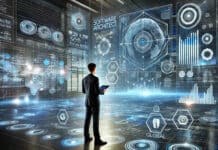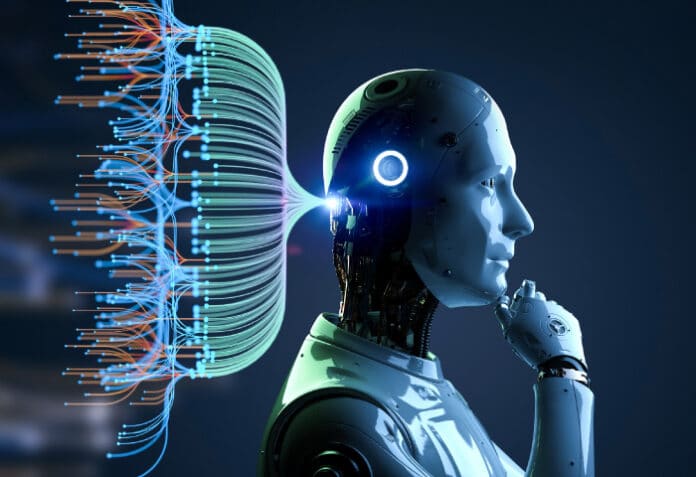By integrating human creativity with machines, generative adversarial networks (GANs) and creative AI are pushing boundaries to reshape artistic expressions. But there are many pitfalls to be wary of.
In the realm of artificial intelligence, one innovation stands out for its potential to revolutionise creativity: generative adversarial networks (GANs). These systems have captured the imagination of artists, designers, and technologists alike, offering a powerful toolset for generating, enhancing, and exploring creative content.
Creative AI
Creative AI is a burgeoning field at the intersection of artificial intelligence and artistic expression. It encompasses a diverse range of technologies capable of generating novel and original creative outputs, from music and poetry to paintings and sculptures. While still in its infancy, creative AI holds immense potential to redefine creative processes, democratise access to artistic tools, and usher in a new era of artistic exploration.
One key aspect of creative AI lies in its ability to learn from vast amounts of data. By analysing existing artworks, musical compositions, and literary masterpieces, AI can glean insights into patterns, styles, and techniques that govern artistic creation. This knowledge can then be used to generate new content that is both original and aesthetically pleasing.
For example, AI-powered music composition tools can create unique melodies and harmonies based on the user’s preferences and chosen style. Similarly, AI-powered writing assistants can generate creative text formats, like poems, scripts, and even code, based on prompts and inputs from the user.
Beyond simply generating content, creative AI can also be used to augment and enhance the creative process itself. Imagine a painter who uses an AI assistant to sketch out potential compositions or a musician who collaborates with AI to co-create a song. In such scenarios, AI acts as a partner, providing inspiration, expanding possibilities, and overcoming creative blocks.
The potential benefits of creative AI are manifold. However, the development of creative AI also raises ethical concerns. Questions arise regarding the ownership and copyright of AI-generated works, the potential for AI bias to be reflected in creative outputs, and the impact of AI on the livelihoods of human artists.
Navigating these challenges requires a thoughtful and nuanced approach. Ethical guidelines need to be developed to ensure fairness and transparency in the use of creative AI. Additionally, emphasis should be placed on human-AI collaboration rather than replacement, with AI seen as a tool to empower human creativity, not replace it.
Key characteristics of creative AI
Creative AI encompasses a diverse range of technologies, but some key characteristics define its capabilities.
Learning from data: AI systems can analyse vast amounts of data, including existing artworks, music, and literature. This data is used to identify patterns, styles, and techniques, which are then applied to generate new and original creative outputs.
Generating novel content: AI can create unique and innovative artistic works across various mediums, including music, poetry, paintings, and even code. This can be achieved through various techniques, such as machine learning algorithms and GANs.
Augmenting creativity: AI can act as a powerful tool to enhance and expand the creative process. It can offer suggestions, generate variations, and overcome creative blocks, assisting artists in exploring new ideas and possibilities.
Adaptiveness to user preferences: Many creative AI systems can be customised to user preferences and styles.
Democratisation of creativity: AI makes creative tools more accessible and user-friendly, allowing individuals without prior artistic training to contribute to the artistic landscape.
Generative adversarial networks
A GAN is a type of machine learning model that consists of two neural networks competing against each other in a zero-sum game. This means that one network’s gain is the other network’s loss.
A GAN works as follows.
- Generator: This network is responsible for generating new data, like images, text, or music. It starts with a random input and uses its knowledge to create something that looks real.
- Discriminator: This network is responsible for determining whether the data it receives is real or generated by the generator. It tries to distinguish between real and fake data.
- Competition: The generator and discriminator are constantly learning and improving. The generator tries to create more realistic data that can fool the discriminator, while the discriminator tries to get better at spotting fakes.
- Convergence: Over time, the generator and discriminator reach equilibrium, where the generator is able to create data that is indistinguishable from real data.
Here are some examples of what GANs can do.
- Generating realistic images: GANs craft high-quality images of non-existent products, historical figures, or even fictional creatures.
- Upscaling images: GANs improve the quality of low-resolution images, making them look sharper and clearer.
- Creating new art forms: GANs generate new music, poetry, or paintings that are unlike anything ever created before.
- Personalising experiences: GANs create customised experiences for users, such as generating personalised music playlists or recommending products that they are likely to be interested in.
Applications of GANs in art, design, and content creation
The applications of GANs span a wide spectrum of creative domains, offering transformative possibilities.
Visual arts and design: In the realm of visual arts, GANs have made waves by generating stunning, lifelike images and artworks. They can create paintings, sketches, and even reimagine classic artworks in entirely new styles. Artists and designers leverage GANs to explore new aesthetics, generate novel visual concepts, and push the boundaries of traditional art forms.
Fashion and product design: GANs have found applications in fashion and product design, facilitating the generation of new clothing designs, textures, and styles. Designers use these networks to experiment with unconventional patterns, materials, and shapes, leading to innovative creations that may not have been conceived through conventional design processes.
Music composition and generation: Music composition has also witnessed the impact of GANs. These networks can compose music in various genres, replicate musical styles, and even generate new melodies, harmonies, and rhythms. Musicians and composers collaborate with AI to explore new musical landscapes, generating compositions that inspire and surprise.
Writing and storytelling: GANs have also entered the world of literature by generating text, stories, and even entire articles. While the coherence and contextuality of the generated text may vary, these systems provide a starting point for writers, sparking ideas or generating diverse narratives.
Despite their incredible potential, GANs also raise ethical concerns, particularly regarding the authenticity of generated content. As these systems become more adept at producing convincing fakes, there’s a growing need for ethical guidelines and responsible usage to prevent misuse, such as deepfakes or misinformation.
Ethical and copyright concerns in AI-generated content
The rise of AI-generated content brings with it a wave of possibilities. However, it also raises significant ethical concerns.
Ownership and copyright
- Who owns the copyright to AI-generated content? Is it the creator of the AI, the user who prompts the AI, or the AI itself?
- How can we ensure proper attribution and compensation for creators whose work is used to train AI models?
- How do we address the potential for copyright infringement when AI generates content that is similar to existing copyrighted material?
- When AI generates content based on existing copyrighted material, such as creating art inspired by existing works or generating text that resembles copyrighted material, it raises questions about the boundaries of fair use and derivative works.
Bias and discrimination
- AI models are trained on large data sets of text and code, which can reflect and amplify existing biases and discrimination. This can lead to AI-generated content that is biased or discriminatory against certain groups of people.
- How can we mitigate bias in AI models and ensure that AI-generated content is fair and unbiased?
Transparency and accountability
- The inner workings of many AI models are complex and opaque, making it difficult to understand how they generate content. This lack of transparency can make it difficult to hold them accountable for the content they produce.
- How can we increase transparency in AI models and ensure that they are used responsibly?
Misinformation and disinformation
- AI can be used to create realistic-looking fake news articles, videos, and other forms of content. This can have a significant impact on public discourse and democracy.
- How can we combat the spread of misinformation and disinformation generated by AI?
Job displacement
- AI is capable of automating many tasks that are currently performed by humans, including creative tasks like writing and design. This raises concerns about job displacement and the impact on the workforce.
- How can we ensure that AI is used to create jobs rather than destroy them?
Privacy and consent
- The use of AI to generate content can potentially infringe upon privacy rights. For instance, deepfake technology, a product of AI, can create realistic videos by superimposing someone’s likeness onto another person’s body.
- This raises concerns about consent and the potential misuse of individuals’ images or voices without their permission.
Here are some potential solutions to these challenges:
- Develop ethical guidelines and regulations for the development and use of AI
- Increase transparency and accountability in AI models
- Educate the public about the capabilities and limitations of AI
- Invest in research on mitigating bias in AI
- Support creative industries and workers who may be impacted by AI
The future of GANs in creative AI holds immense promise. Ongoing research aims to refine these networks further, enhancing their ability to understand and generate complex, multi-modal content across various domains. Advancements in GAN technology may lead to more interactive and collaborative tools, empowering creators to engage with AI in real-time and co-create novel, unexpected content (https://www.frontiersin.org/articles/10.3389/frai.2021.604234/full).
In conclusion, generative adversarial networks represent a groundbreaking leap in the realm of creative AI, unlocking new avenues for artistic expression and innovation across diverse fields. While challenges persist, the potential for GANs to augment human creativity and reshape the creative process is undeniable, ushering in an era where AI collaborates hand-in-hand with human ingenuity to redefine what is possible in the realm of creativity.










































































